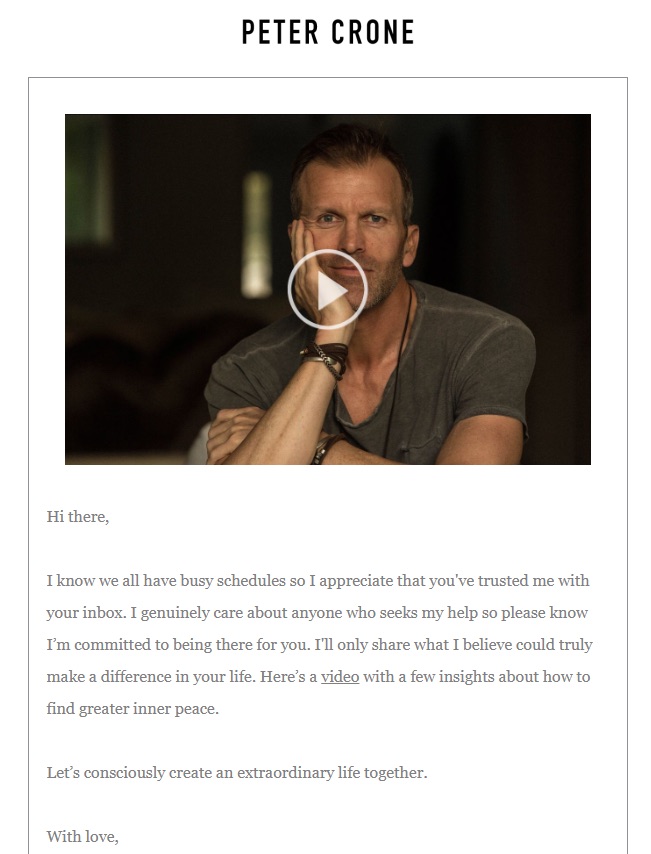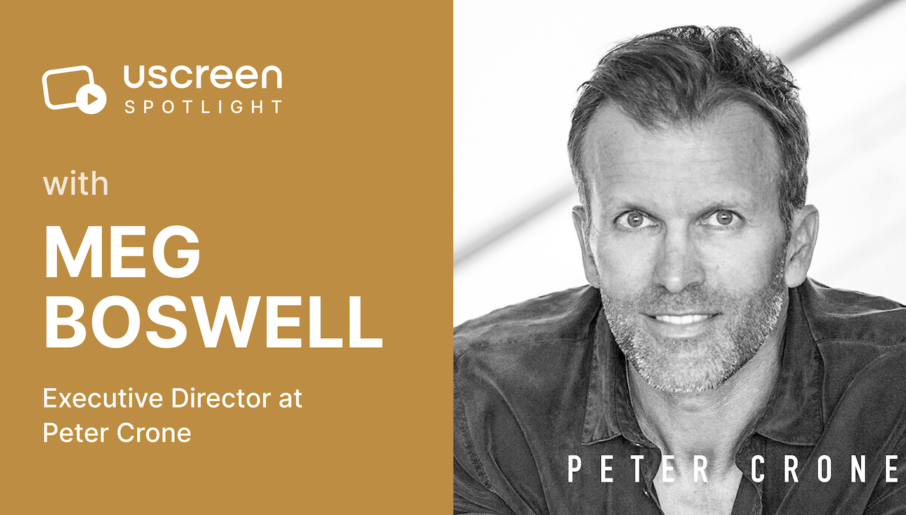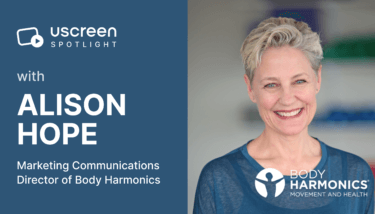Uscreen Spotlight is a special monthly feature article showcasing our most successful clients to share their journeys through the realm of online video streaming.
Do you feel like everyone is publishing a book these days?
It often seems that if you want to be considered somebody in your niche, you need to be a best-selling author that’s been invited onto every industry podcast to promote it.
But, what if writing a book isn’t the right option for your business? What if there’s a better way to package your content and serve your audience?
That’s exactly what Peter Crone has put to the test by launching his Free Your Mind series. He wanted to go beyond a book and find a more creative way to help people.
We caught up with Peter’s Executive Director, Meg, to find out more…
Uscreen: Hey Meg! Nice to meet you. Could you tell us a little bit about Peter Crone, and the Free Your Mind series?
Meg: Peter is a lot of things: a writer, a speaker, a thought-leader. But the way I like to describe Peter is that he’s a Mind Architect. That usually gets a lot of “ooohs” from people and everyone is then curious about what that really means.
Peter helps people to redesign their subconscious mind. We’re all walking around with thoughts and experiences that define how we experience the world.
What Peter does is he goes in and helps people to restructure how they think about these past experiences, so they can reframe life and understand themselves in a new way.
Free Your Mind, our online series, distills the tenants that Peter covers in his one-on-one sessions to help people achieve these breakthroughs at home.
Uscreen: What can people who sign up to Free Your Mind expect?
Meg: We’ve split the course into three elements: Insights, Guest Sessions, and a Group Q&A Call. Each of these parts belongs to a different tier of the course.
You can think of Insights as the theory portion. Peter talks about the nature of the mind, the ego, and gives a general overview of the foundation of his work.
With the Guest Sessions you see Peter put those foundations into practice. There are four recorded calls, with people Peter has never met, where he takes them through his process, explores their stories and internal narratives, and helps them to find freedom.
You get to go on their emotional journey with them – where they cry and laugh and reach breakthroughs – so you can see how the foundations are applied and empower yourself to do the same. And, I can speak from personal experience that you can find yourself crying along with them.
The final element is the Group Q&A Call. This is a live call with Peter where he works through people’s questions. We send out a questionnaire ahead of time and look for the similarities in the questions, and find ways to help as many of the students on a personal level as possible.
Uscreen: Man, that’s a lot of value! What type of people does that content attract?
Meg: Peter’s done a lot of work with sports teams, like the Arizona Diamondbacks baseball team, so some might think our traditional audience might be focused on sports performance.
The reality is that basically everyone is performing. Anywhere that you want to be at your best under stress requires a strong ability to perform, and that applies to so many people.
We’ve even started to see people gift our courses to kids now, so they can start implementing the information at a young age. There’s really something for everyone.
Uscreen: Those are really different demographics to try and mesh together. Have you found it hard to brand for such a wide range of people?
Meg: It took some trial and error. We’re both recovering perfectionists, so we spent a lot of time getting it right. The website, for example, went through a lot of different stages. There were countless versions of the site before we launched, and it eventually came down to a choice between two final designs. We chose a clean, neutral look that focuses on the key tenants of our product.
Uscreen: We know that books are a HUGE part of the self-development niche. There are thousands of them published each year. What was the thought process behind turning this information into an online course instead of a book?
Meg: Making your life’s work into a book is a real process. Since people have been asking to access more of Peter’s work for years we started looking at other options to get people access to Peter’s work.
Working as an entire team, it took us around seven or eight months to create the content and have it ready to launch to our audience. We had total control over the creation process, and going digital allowed us to reach people all over the world. Anyone, from any country, who wants to access Peter’s content can do so now. It was a real win-win for us!
Uscreen: Okay, so you’ve built a product that reaches a wide range of demographics, and has the potential to attract a worldwide audience. How do you go about marketing something like that? It must have felt like a monumental task!
Meg: We had to be deliberate and specific in how we approached our strategy, and we asked for input from a lot of our peers on how they would do it. Kerwin Rae was a big help!
Asking our audience what they wanted was the most effective strategy for us. People signed up to receive information about a course in advance through a form on our site.
It contained a few questions – you know, like What would you like to see in the course? or What questions would you like Peter to answer? – and every submission would add them to a dedicated online course mailing list. This let us see how much interest there was, and create audience-led content.

While we were creating the course we’d send out some behind-the-scenes content to subscribers to bring them along for the journey. And, when the course was finally live everyone was as excited as we were which let us market to a really targeted audience.
That’s a nice way to get started with a smaller community of an audience who knows and is actively asking for a course from you so you can test it out and get feedback and then expand to a larger audience.
Uscreen: The majority of Uscreen site owners choose a subscription video-on-demand (SVOD) pricing model for their website, but you guys have seen a lot of success using the transactional video-on-demand (TVOD) model. What made you choose this model?
Meg: We spent a lot of time considering which model to choose. We felt that our audience had already been waiting long enough for this content, and we wanted a simple one-time purchase delivery method to get it to them.
We wanted our audience to choose the level of access they wanted, and get started. But we definitely wouldn’t rule out a membership model in our future.
Uscreen: We know a lot of our Uscreen customers enjoy using our coupon feature. But, we’ve heard you’ve been implementing it in a pretty unique way. Would you mind sharing a little bit about how you’ve been using them?
Meg: Sure! We wanted to find a way to give back through a scholarship program. We had people write in about their lives – their challenges, what we’ve been going through – and, using the coupon feature, we were able to give access to the platform to a large number of people who really needed it through scholarships.
Uscreen: That really is the most creative use for Gift Cards we’ve seen yet. Thanks for your time today, Meg. Before you go, what are the future plans for the Peter Crone site?
Meg: We want to use what we’ve learned from this course to create more, challenge-specific courses. We’ll be reaching out to our community to find not just what they want, but what they need, and deliver it to them.
If you’d like to learn more about Peter Crone’s work, you can check out his Free Your Mind series right here.


